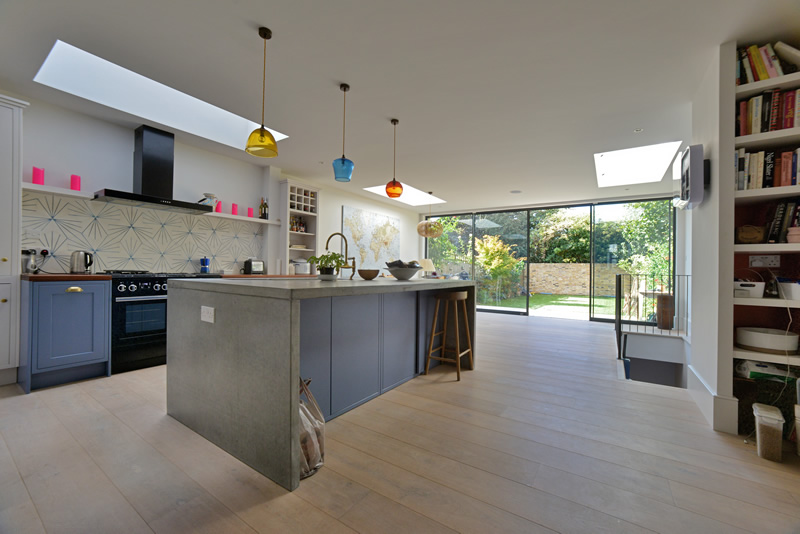The majority of London homes have either a cellar or a crawl-space beneath their ground floor. In either case, it is possible to create versatile new living space suitable for things such as offices, kitchens, gyms and recreation rooms; however, to provide comfortable headspace, it is often necessary to lower the existing floor level.
Victorian buildings often have open foundations
Modern buildings are usually built on a reinforced concrete slab or beams, while larger buildings are supported by deep underground columns of reinforced concrete called piles. In contrast, the Victorians usually relied on a pyramid-shaped footing for load-bearing walls; once below ground level, the brickwork becomes wider. This Victorian method has stood the test of time, with most still rock solid.
The depth of these footings varies greatly between one building and another and depends on the stability of the soil beneath them and to either side. Excavating the floor cannot be allowed to undercut or destabilise them. A specialist basement construction company in London can offer a variety of solutions.
Even if you are thinking of extending your property upwards rather than downwards, you need to remember that this will add a lot of weight; consequently, it is still a good idea to consult a basement specialist to evaluate the strength of your foundations. London’s clay soils are notorious for shrinking and swelling when their moisture levels change, with short footings the most likely to crack.
Typical underpinning solutions
A relatively simple method for moderately deepening a basement floor is to leave a slope of existing material from the walls down to the new lower floor level. A reinforced concrete ‘bench’ is created over this to ensure its stability.
Another method is to deepen the original footing. This involves excavating below one segment of wall at a time to install supporting concrete blocks. With this approach, you can improve the load-bearing ability of the walls in addition to lowering the floor (or floors).
In new builds, larger buildings or more complicated scenarios, piling is an option. Piles provide tremendous stability in all directions and can be used to deepen existing underpinning or to support new retaining walls, whether temporary or permanent.
Piling methods
Open-bore piling is done with a rotating auger. Augers generate relatively little noise and vibration, which is an important consideration when you have neighbours and especially when the property is part of a terrace. Continuous flight augering is an even quieter option whereby the drilling and concreting are done incrementally, with the concrete pumped through the stem.
On soft ground when the piles need to be deeper, cased piles can be driven in with jacks or a drop-hammer.
Piles can be dug adjacent or overlapping each other (secant) to create strong new retaining walls for deep constructions; however, in moderate basement conversions or home underpinning, only ‘micro-piles’ are usually needed.

